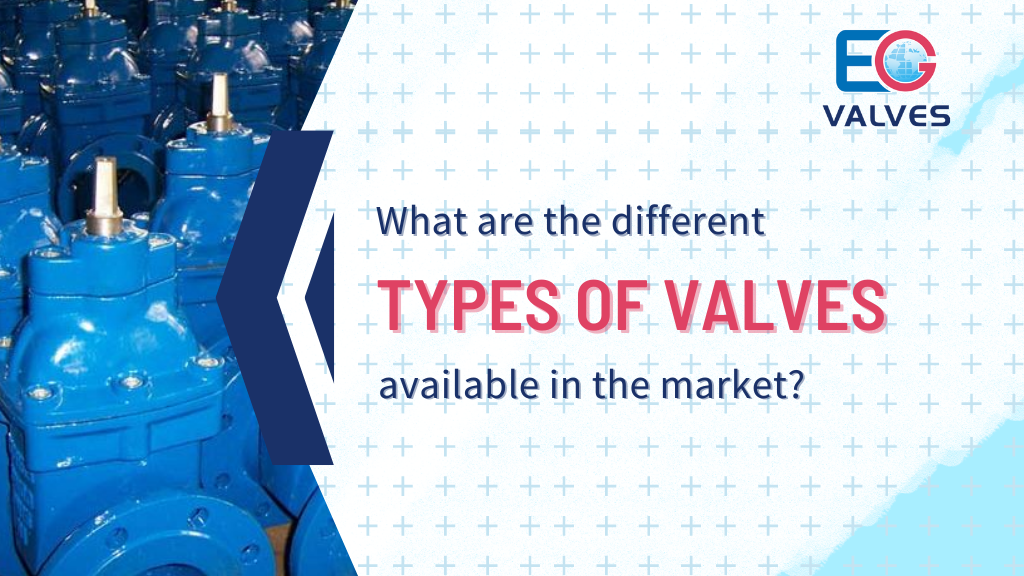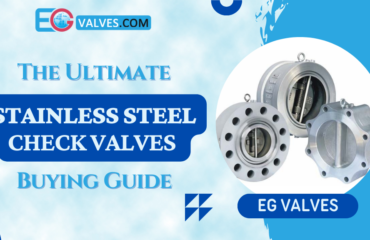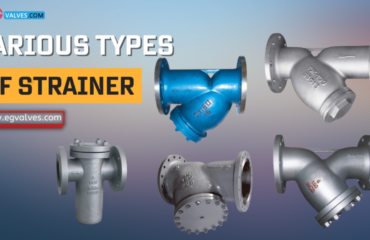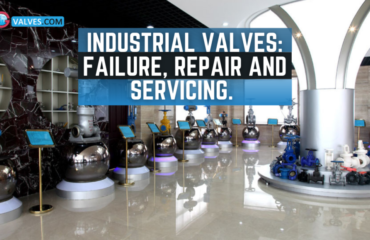When it comes to selecting the right valves for your needs, it can be a little overwhelming with all the different types and sizes that are available. From check valves to relief, ball, gate, globe, plug, and butterfly valves, there is a complete variety of industrial valves available.
Don’t worry. We’re here to help you.
In this blog, we’ll take you through the different types of valves and their applications, so you can make the best decision for your needs.
Each variety has distinct benefits and drawbacks. Plates, balls, and diaphragms serve as mechanical barriers in valves. These barriers can be removed from a flowing stream of material and inserted in the valve. Some industrial and commercial valves can be switched on and off, while others automatically allow fine control. The material selection is important in the specification of valves. This ensures that liquids or powders flowing through the wetted parts of the valve are compatible. Furthermore, selecting the appropriate valve depends upon things like the diameter of the pipe, flow rate and pressure of the fluid/gases involved, and distance between valve flanges.
Classification of the Valves:
Valves can be classified on the basis of their function, operating principle, and construction. Some common types of industrial valves you can find in the market are:
- Relief Valves
- Ball Valves
- Butterfly Valves
- Gate Valves
- Globe Valves
- Plug Valves, and
- Check Valves
Relief valves permit fluid to flow only in one direction and relieve pressure. The ball valve has a ball-shaped disc that helps regulate the movement of fluid in a system. Butterfly valves have a rotating disc that helps govern the fluid flow. A plug valve has an insertable plug and a seat where the plug can be seated to control the flow of liquid. Check valves permit fluid flow in one direction and help with stopping the reverse flow.
Why do we use valves?
Valves can be used for different reasons, including-
- To interrupt a flow and start one.
- Control the pressure.
- Mixing of the solids and liquids in a system.
Applications, Advantages, and Disadvantages of Valves
There are numerous varieties of valves on the market. Each has a special set of benefits, drawbacks, and applications. Here is some information on the same:
1. Ball Valves
These are among the most common valves that are preferred due to their durability and simple construction. A ball valve is a disc-shaped sphere with an opening or closing mechanism to regulate fluid flow. A ball is a cylindrical object with a handle attached to it that passes through a hole in the middle.
The ball turns when the handle is turned, opening or closing the valve. Ball valves are able to handle high pressure and are quite reliable. They are not recommended for use with slurries and other solid suspensions as they can get clogged.
Advantages:
- Ball valves are easy to use. You can operate them with the handle. Rotate it to open or close the valve.
- This makes them ideal for applications requiring quick, frequent operation.
- Ball valves can withstand repeated use and abuse without fail, which makes them ideal for critical applications.
Disadvantages:
- Ball valves can be more expensive than other valves.
- They are not suitable for applications where a very fine degree of control is necessary, as they can only be fully open or fully closed.
Applications:
- The ball valves control flow and pressure and shut off for normal, corrosive, and slurries.
- They are employed in the natural gas and oil industries, as well as in various manufacturing fields, chemical storage facilities, residential settings, and other applications.
2. Butterfly Valves
Where there is a lack of space, these butterfly valves might be employed. This valve has a simple opening and closing mechanism. It permits or prevents fluid flow. These valves are quite similar to ball valves, except for the fact that a disc is attached to the handle rather than a ball. The valve cannot be opened or closed by the disc rotating. Instead, it moves up and down.
Butterfly valve is smaller in size and are suitable for use in limited-space applications. They are less durable than ball valves and can be damaged by high pressure.
Advantages:
- The main advantage of butterfly valves is their affordability.
- They are easy to set up and maintain, making them a popular choice for many companies.
- Butterfly valves can also be installed horizontally or vertically.
Disadvantages:
- Butterfly Valves can withstand large flow rates and are reasonably priced. This makes them appropriate for high-pressure applications.
Applications:
- Applications for the butterfly valve include the processing of food, drugs, and chemicals.
- Corrosive liquids can be used with them at low pressure and temperature.
3. Gate Valve
Gate valves are among the most used types of valves. These valves can help regulate the flow of fluids in a piping system. The gates of these valves can be opened or closed on demand to enable or disable fluid flow. While fluid flow occurs when the gate is open, it can’t pass through while they are closed.
Advantages:
- Gate vales have low friction losses
- They can be used in both directions within a circuit
- They offer laminar flow and minimal pressure loss
- Gate Valve lower ownership costs and help to save energy
- A low-pressure drop will occur when the seal is fully and tightly opened.
Disadvantages:
- Gate valves can’t be opened and closed quickly
- They produce vibrations
- Leakages in gate valves can occur in systems that experience high-temperature fluctuations irregularly due to the pipe load at the valve end.
- Gate valve seating surfaces demand complicated operation, maintenance, and repair.
Applications:
- A gate valve can be used in conditions of extreme pressure and temperature.
- On-demand apps can make use of them.
4. Globe Valve
Valves are mechanical devices that control the flow of liquids and gases. They can open and close partially or completely, to open and block channels. There are different types of valves on the market. Each one is designed for a specific application.
Globe valve feature a rounded body and a disc that fits inside the body that is plug-shaped. The valve can be opened or shut by raising or lowering the stopper. They are a good choice for high-pressure systems. Furthermore, they can also be used as isolation valves as they can be completely closed to prevent fluid flow.
Advantages
- Globe valve throttling is a smart move.
- They can also be used as stop-check valves, have a wonderful full-closing function, have a quicker closing time for this offer, and are simpler to mount the body ring on the top.
- They can successfully switch off.
Disadvantages
- Higher pressure loss
- Globe valves must be closed under high pressure.
Applications:
The Globe valve is used primarily to throttle. But they can also be used as all-purpose flow control valves in high-temperature and pressure systems.
5. Check Valves
The market is filled with a wide variety of valve types, each serving a distinct function. These valves can be used to stop reverse flow.
Backflow or Reverse Flow is when fluid flows in a direction other than what it was intended. This can happen if there is a sudden loss of pressure in the system or if something downstream blocks fluid flow. Check valve must be able to open and close quickly to stop backflow before it happens.
Advantages
- Check valves act as a failsafe and stop backflow.
- They can resist pressure.
Disadvantages
- They can’t be used with pulse systems
- The closing element could crash, causing excessive wear and damage.
Applications
- Check because of the range of available materials and their straightforward design.
- Valves are used in many different types of applications and industries.
- They aid in pressure maintenance by limiting backflow.
- The production of oilfields, water, steam, petrochemical processing, and viscous fluids are just a few industries that require check valves.
- They are also used in wastewater management and manufacturing processes.
6. Plug Valves
Plug valves are another type of valve that can be used to regulate the flow of fluid. These valves use a ported plug to accomplish the task. You can pivot flows to restrict or allow flows. You must be aware of your valve’s type, size, connections, composition, and port arrangement. The plug valve is used to turn off the system. It can be used as control valves in processing plants, wastewater treatment plants, and chemical industries.
Advantages
- Plug valves are extremely straightforward to build and contain few parts.
- They are small, yet they are very simple to open and close.
- Plug valves can be fixed or maintained right where they’re being used.
- These valves offer lower resistance to flow.
- Plug valves are reliable and can prevent leaks.
Disadvantages
- High friction is required for the first movement (opening or closing) of the valve.
- A gearbox with an actuator is required for large-size valves.
- Plugs can cause the flow to narrow.
- Ball valves are typically less expensive than plug valves.
Applications:
Plug valves are effective at controlling flow. This is because they can be used with hazardous liquids and corrosive gases. The following are the applications that Valve Manufacturers can use plug valves:
- Oil piping systems
- Systems for extreme temperature and high-pressure flow
- Chemical servicing
- Corrosive substances processing.
7. Relief Valves
Relief Valves protect boilers from excessive pressure. They are typically made with a spring-loaded diaphragm. Both internal and external pressure release is possible with the help of these valves. The type and size of the valve you choose, the port connections, the size of the valve, and the pressure rating are all included in these parameters.
On gas lines and pneumatic compressors, relief valves can be installed. They are applicable to cryogenic systems and are capable of functioning automatically. However, they can be manually engaged for testing. For condensers, atmospheric relief valves are offered.
Advantages
- The most reliable type is one that has been properly sized and operated
- Multipurpose — Can be used in many different services
Disadvantages
- Back pressure relief
- If the back pressure builds up, it is easy to talker
Applications
- Relief valves can be utilized in a wide range of industries, including gas, petrochemical, and power generating, for smooth operation.
- These valves are utilized in multi-phase chemical processing and refining applications.
- When high pressure is not a problem, a relief valve is not required.
- As soon as they are in use, relief valves are normally shut off until the upstream pressure reaches the target pressure.
- The valve closes when the downstream pressure falls below the target pressure.
How Can We Choose the Best Type of Valve?
Many types of valves are available in the market, so how do we select the best one for our needs? The most important factors to consider are:
-The nature of fluid or gas flowing through the system
-Operating conditions, such as temperature and pressure
-The desired flow rate
Once we know these factors, we can narrow down the choices and select the best type of valve for our application.
Conclusion
Valves are crucial parts of several systems and are used in a variety of industries, including plumbing and automobile. Since there are different types of valves, understanding how they function is important. This will help you select the best industrial valve for your requirement.
We hope this blog post has given you more knowledge about the various valve types on the market and a clearer idea of which will best meet your needs. You also can go to our website for additional details.





[…] the types of valves it makes are general, the list of materials from which they can be done is also very large. […]
[…] are three types of valves: rising stem, non-rising stem, and floating. Each type has its own unique benefits and drawbacks […]